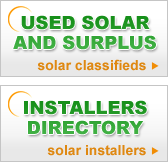
Greenhouse gases are found in our atmosphere because they
help emit and absorb radiation which is responsible for global warming.
Methane, ozone and water vapor are all considered to be greenhouse gases,
but the most prevalent is carbon dioxide (CO2). This gas is emitted
from many sources, but mainly industrial power plants and automobiles.
There are many ways that we can reduce our CO2 emissions, but buying
carbon credits is one of the most effective ways we can offset our carbon
footprint.
Carbon credits were established by the Kyoto Protocol in 2004. Although
the United States chose not to participate in that global effort to
curb pollution, many states (like California and Illinois) have set
up their own system to offset carbon emissions. With the credit system,
developed/developing nations are forced to put a cap on their emissions
(Tonnes of CO2), and if they exceed their limit, they have to purchase
credits from other nations that haven’t met their limit or who
have invested in emission offsetting.
For example, if a nation has a limit set to 80,000 square Tonnes of
CO2 per year, and they emit 100,000, they must purchase 20,000 worth
of credits from another nation to offset their carbon footprint. The
advantage to this system is that it levels the playing field for countries
that do not have the economical means of mitigating their CO2 problems.
Environmentally-minded individuals also have the opportunity to buy
carbon credits. The first step is to determine your carbon footprint
by how much energy you use on a daily basis. There are several Websites
that can calculate this number. We recommend using the Nature Conservancy’s
Online Carbon Calculator, which will account for energy used for home,
food, diet, driving, and waste. This number will determine how many
credits are needed for you to offset your carbon footprint.
Some have the advantage of living in a geographical location that promotes
clean energy (solar, wind, etc.). However, most utility companies now
have carbon offsetting programs for individuals who don’t have
access to clean energy. These programs make it possible for private
homeowners to buy carbon credits which will further fund CO2 reduction.
Investors can often choose what their credits support: Planting projects
that prevent deforestation and enhance natural forests, renewable energy
(solar, wind, hydro, biofuel), or conservation projects.
EcoBusinessLinks is a site that compares legitimate carbon credit providers
based on your ability to invest in CO2 offsetting. And don’t forget,
there are simple methods of reducing your carbon footprint (turning
off the lights, using energy-safe bulbs) that make it so you don’t
need to buy carbon credits in the first place.
e-book home








